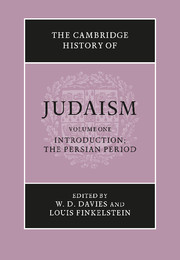3 - Calendars and chronology
from INTRODUCTION
Published online by Cambridge University Press: 28 March 2008
Summary
The Babylonian conquest changed both the civil calendar and the reckoning of years in Judea. 2 Kings 25 illustrates this transformation: first there are two datings after the regnal years of Zedekiah, the last Davidic king. But, after the capture of Jerusalem in 587 b.c.e., the events, even the burning of the Temple, are dated after the regnal years of Nebuchadnezzar. From 586 on, the Jewish computation of years consistently followed the succession of gentile overlords of the chosen people: ‘In the second year of Darius the king’ (Hag. 1: 1), ‘in the second year of Nero Caesar’. A Mishnah explicitly stated that a bill of divorcement (and, certainly, other documents) with an irregular dating would lack legal force. Accordingly, the documents from the desert of Judea, drafted under the Roman rule, just as the documents of the same kind written in the province of Arabia, were dated after the regnal years of the Roman emperors. ‘The name of the ruler is in the beginning (of a bill of divorcement).’
Under the Hasmoneans, from 134–132 b.c.e. on, and under the Herodians, Jerusalem dated by the year of her own kings, as for instance the coins of Alexander Janneus show. During the two rebellions, that of 66–72 c.e. and that of Bar Kochba, coins and documents bore the dates of the respective freedom eras: ‘Freedom of Jerusalem’ and similar slogans in the first rebellion (years 1 to 6), and ‘Redemption of Israel’ vel simile under Bar Kochba (years 1 to 3).
- Type
- Chapter
- Information
- The Cambridge History of Judaism , pp. 60 - 69Publisher: Cambridge University PressPrint publication year: 1984
References
- 1
- Cited by



